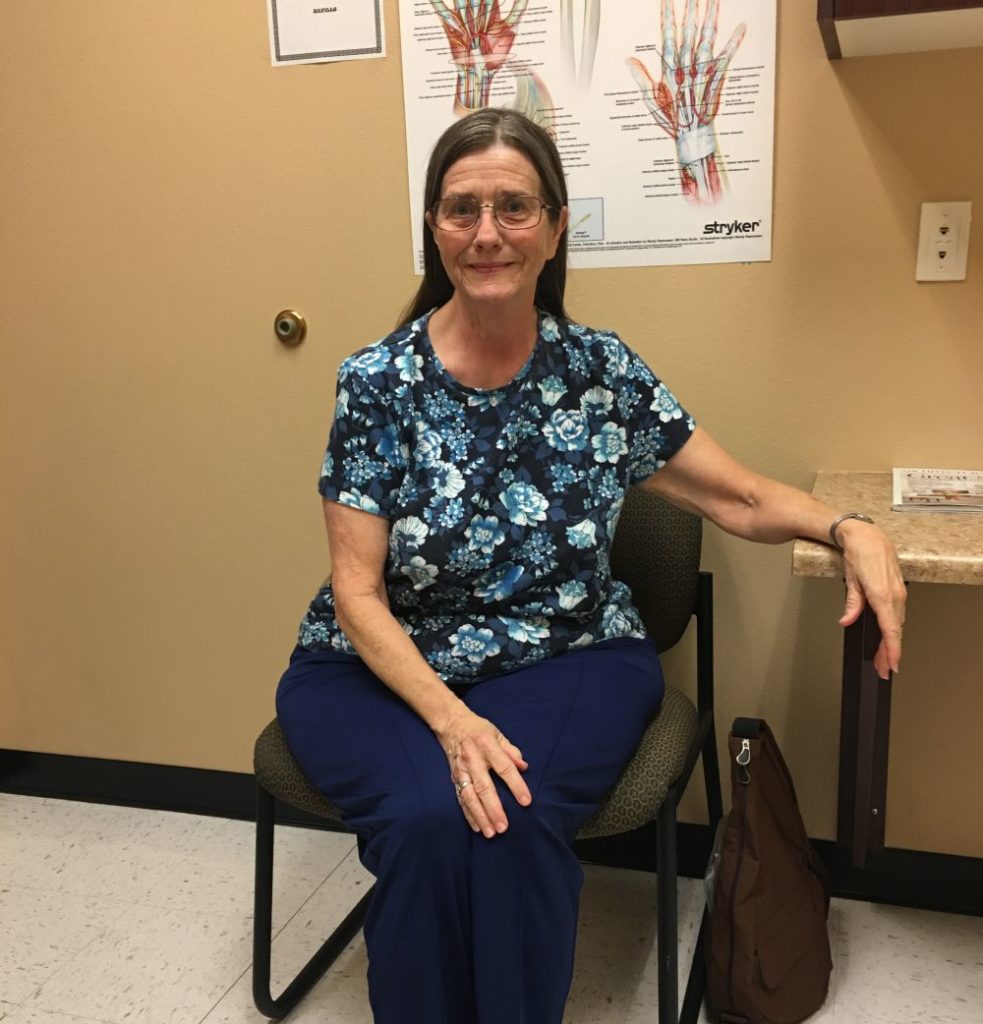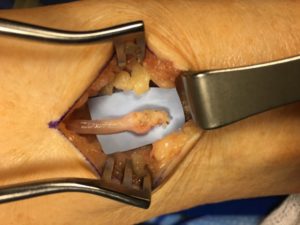Peripheral Nerve Damage Sidelines Susan

Susan is back to square dancing thanks to surgeries by Dr. Tollestrup to repair peripheral nerve damage.*
Susan is a patient of Dr. Tim Tollestrup’s. She came to see him with severe pain in her right leg secondary to the peripheral nerve damage she experienced. The pain impacted her life every day. It sidelined her from her passionate love of square dancing. Before the injury, she would dance four or five times a week.
Dr. Tollestrup recognized the problem as a condition known as meralgia paresthesia, a compression of a nerve called the lateral femoral cutaneous nerve (LFCN). Dr. Tollestrup ordered a block of the LFCN. This relieved the right thigh pain, confirming the diagnosis.
Nerve Graft Innovation
Next, Dr. Tollestrup turned his attention to the pain in Susan’s right lower leg and foot.
Over the last few years, a human tissue company pioneered cadaveric nerve allografts to repair nerve injuries. These nerves are specially treated via a proprietary method which removes all of the cellular components of the nerve but leaves the crucial scaffolding behind.
This provides the superstructure the nerve fibers need to span a gap but none of the immunogenic elements usually found in foreign tissue. This prevents the recipient from rejecting the new nerve.
Sewing a cadaveric nerve allograft onto the upstream end of the native nerve allows the nerve to grow and find the downstream end of the nerve.
With a nerve graft, however, there are no Schwann cells which normally assist this process, supplying the “fuel” if you will, for the nerve to continue growing. The end result is that the nerve burns itself out in the cadaver nerve graft without being able to form a painful neuroma. The nerve essentially becomes dormant and the patient’s pain is gone!
Neuroma Removed
This is what Dr. Tollestrup did for Susan’s painful neuroma. In the operating room Dr. Tollestrup opened Susan’s lower leg back up, found the painful neuroma and removed it, trimming the native nerve back to healthy, non-scarred tissue. He then sewed in a cadaveric nerve to the end of Susan’s native nerve.

Cadaveric nerve graft inserted by Dr. Tollestrup.
For the thigh pain, Dr. Tollestrup followed Susan’s LFCN deep into the pelvis where it was disconnected and buried in the muscle – this traditional approach is 100% effective for the LFCN because the nerve can be placed in a position where it will never be bumped or irritated, unlike the Superficial Peroneal Nerve in the lower leg.
Two months after her last surgery, Susan has had complete resolution of her right thigh pain as well as the pain in the right lower leg and top of the foot. She is back doing what she loves and her dance card is always full.
If you or someone you know is suffering from chronic pain, Dr. Tollestrup can help. Call the office to set up a consultation – 702-666-0463.
*Disclaimer
We do not guarantee any specific results or outcomes for surgery, should our practice work on your behalf. Information on this website may be used as a reference for successes we’ve achieved for our patients, and not as an assurance or guarantee for similar results in all instances.
